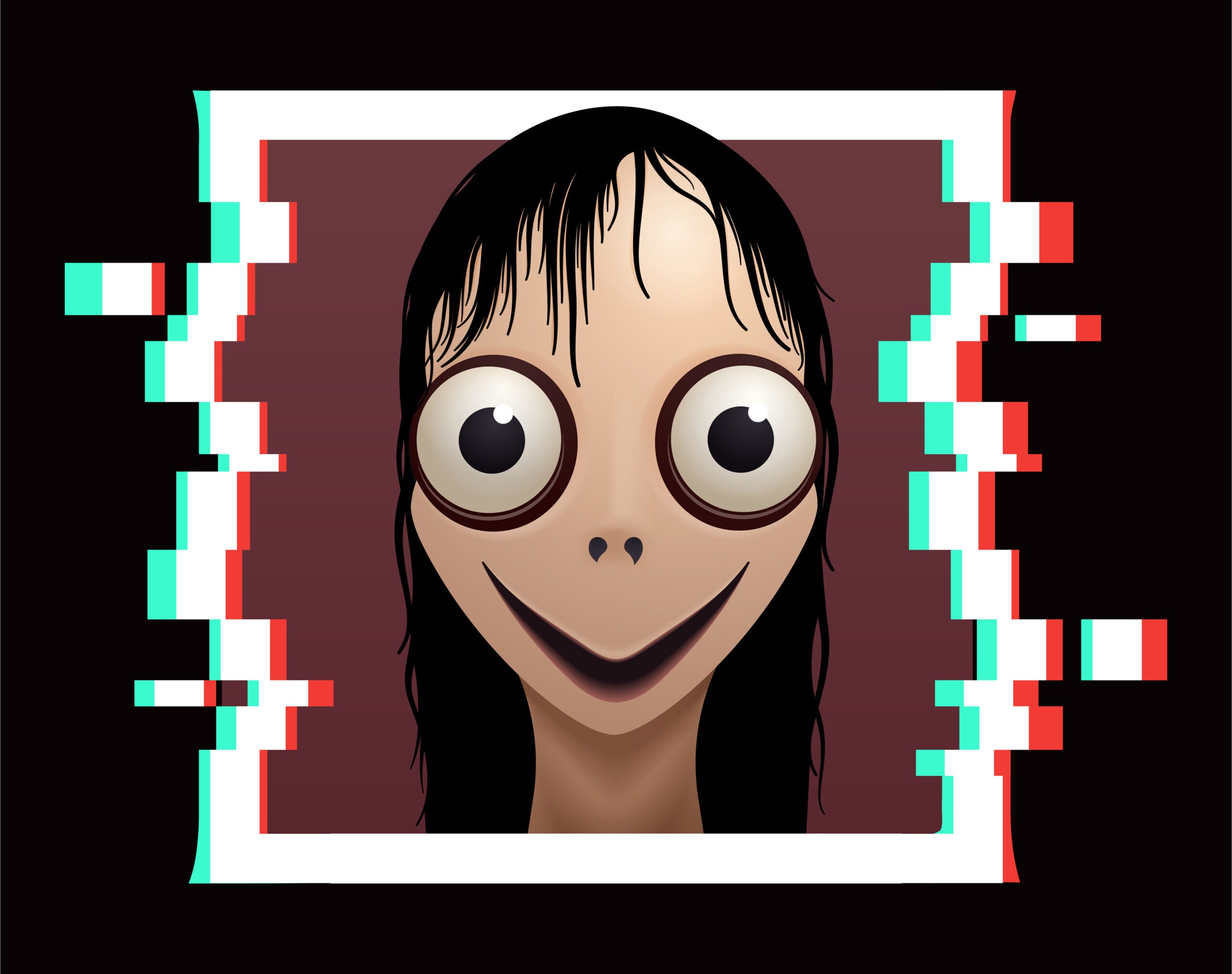
The pantheon of internet horror saw newcomer Loab claw herself into the ranks of Slender Man and Momo this week by leveraging netizens’ taste for the shocking and macabre.
But Loab is more than just a scary meme. For Big Tech firms, she represents their ongoing and losing battle to curb the spread of fake news and conspiracy theories. For those with a propensity to evangelise the singularity, the moment in time when artificial intelligence (AI) becomes indistinguishable from human minds, Loab highlights just the surprising ways algorithms can, for lack of a better word, think.
The reason for that last part is due to Loab standing apart from other gnarly internet memes in one very real way. While Slender Man and Momo can trace their origins to the imagination of human beings, Loab was partly spawned from the dark imagination of an AI.
The digital artist and musician using the sobriquet Supercomposite unveiled the terrifying being in a Twitter thread earlier in September. She explained that she first encountered Loab in April when she was experimenting with a custom AI text-to-image platform that’s similar to but is not Dalle-E.
“The AI reproduced her more easily than most celebrities. Her presence is persistent, and she haunts every image she touches,” Supercomposite wrote.
At the time, the artist was experimenting with latent space. A quick explainer is needed here. The first thing you need to understand is that most text-to-image platforms create images in response to prompts from users. If you have a single prompt, that prompt has the weight of one.
How well do you really know your competitors?
Access the most comprehensive Company Profiles on the market, powered by GlobalData. Save hours of research. Gain competitive edge.

Thank you!
Your download email will arrive shortly
Not ready to buy yet? Download a free sample
We are confident about the unique quality of our Company Profiles. However, we want you to make the most beneficial decision for your business, so we offer a free sample that you can download by submitting the below form
By GlobalDataYou can also designate different values to multiple prompts. For instance you can write “cat::0.5, yarn::0.5” and the AI will work on satisfying both those prompts equally. Although, you could save some time by just writing “cat playing with yarn.” You could, however, also assign negative values.
“With these, instead of creating an image of the text prompt, the AI tries to make the image look as different from the prompt as possible,” Supercomposite explained.
That space where the AI goes to imagine indeterminate opposites to things like “logo”, where it draws on zero inspiration from any other source or artist, that space is called latent space. There is nothing there at least nothing tangible.
Supercomposite started off by writing the negative weighted prompt “Brando::-1”, which resulted in the platform creating a logo of a skyline with the text “DIGITA PNTICS”.
“I wondered: is the opposite of that logo, in turn, going to be a picture of Marlon Brando? I typed ‘DIGITA PNTICS skyline logo::-1’ as a prompt,” Supercomposite.
To her shock, the prompt didn’t result in images of the Godfather legend. Instead, a nightmare appeared.
“Loab is the last face you see before you fall off the edge”
Christened after letters that appeared at the top of one of the resulting images, Loab kept appearing whenever Supercomposite entered the prompt.
The horrifying woman has characteristically cut or unhealthy red cheeks and an overall otherworldly look. Making it even more terrifying is the fact that Loab kept appearing whenever Supercomposite kept combining the prompt with other artists’ work or prompts.
The resulting images not only featured the spine-chilling veneer of the AI-rendered woman, but also leaned towards frightening butchery.
What makes it unnerving is that no one really knows why latent space, the untapped mind map of the AI, resulted in these pictures. One can only speculate.
“I think why Loab has become quite popular is that it’s almost like a reflection of our inner kind of fears regarding the proliferation of AI and machine learning and everyday life as well as art,” Idil Galip, a lecturer at the University of Amsterdam and founder of the Meme Studies Research Network, tells Verdict. “And [it’s scary] because we can’t see the person who’s making the art, right; it’s the machine that’s creating these things.”
Speaking with TechCrunch, Supercomposite speculated that the AI probably tried to find the opposite of “logo,” which for some reason tended to veer into the space of horror and gore.
“You start running as fast as you can away from the area with logos,” she told the publication. “You maybe end up in the area with realistic faces, since that is conceptually really far away from logos. You keep running, because you don’t actually care about faces, you just want to run as far away as possible from logos. So no matter what, you are going to end up at the edge of the map. And Loab is the last face you see before you fall off the edge.”
Loab is the latest in a line of scary memes
Loab also taps into another uncomfortable truth: technology is scary and has always been linked to the supernatural. Frankenstein’s monster has been linked to the then-emerging study of electricity. The popularity of seances in the 19th and 20th century has similarly been linked to coming of the telegraph.
So it’s unsurprising that in the days of online connectivity, there is no shortage of scary memes that transcends the web and become modern-day urban legends.
Loab is only the latest in a long line of scary memes. Galip is originally from Turkey. She remembers one image that circulated when she went to middle school
“There was this [photoshopped] picture of a girl who’s like half-dog, half-human and the meme [said that she had] desecrated the Koran, so God smited her and now she’s like a half-dog half-human being” Galip recalls. “And I remember seeing this and I thought it was real.”
A more famous meme originated on the Something Awful forum in 2009: Slender Man. Unlike Loab, this meme can be traced back to one user that started to post photoshopped pictures on the forum of a thin man with no face and tentacle-like appendages protruding from his back, often standing in the background of old pictures.
As the pictures spread, the mythology around Slender Man grew as the community almost crowdsourced their own ideas and pictures. The stories often shared the idea that Slender Man forced people to slaughter their friends and family.
The story took a horrifying turn in 2014 when two 12-year-old girls lured a friend into the woods and stabbed her 19 times in what The Washington Post referred to as “some kind of tribute to Slender Man.” The attempted murder resulted in a moral panic, whipped up by traditional media outlets.
“Moral panics over technology are not new, and moral panics over images are not new,” Jessica Maddox, a PhD student at the University of Georgia, wrote in a Feminist Media Studies article in 2016.
“However, what is new in the context of the Slender Man stabbing is a moral panic that intersects images and technology.”
She suggested that the Slender Man case was unique because it didn’t just mean that people shared pictures. Maddox said that the constant creation, reproduction and consumption of the Slender Man meme had created something new. Something horrifying.
A few years later, a similar frenzy would be whipped up in the infamous Momo Challenge hoax.
The infamous Momo Challenge hoax
A sculpture by Japanese special effects company Link Factory found itself in the spotlight in 2018. The sculpture is of a woman with a weirdly elongated face, huge eyes and a beak-like jaw. The sculpture would become the face of a string of events now referred to as the Momo Challenge hoax of 2018.
At the time, news outlet reported about a challenge – similar to the so-called Blue Whale Challenge – that encouraged kids to engage in increasingly harmful behaviours. The different challenges would eventually culminate in the children committing and filming their suicide.
Parents posted warnings about the challenge, warning their peers to be alert and to look out for the freaky picture of Mom.
However, despite the frenzied media panic, there was little evidence that anyone actually killed themselves because of it. The true danger was overblown.
What memes like the Momo Challenge, Slender Man and now Loab demonstrate, however, is how quickly scary pictures can get a life of their own.
It should be noted that there haven’t been any signs that the pictures of Loab have resulted in any similar panic or the suggestion that anyone has been hurt by them.
That being said, online forums are already awash with chatter about the picture with some joking that there is something supernatural about them.
What does it take for scary memes like Loab to spread?
The power of social media is undisputed when it comes to the spread of scary memes like Loab. For instance, experts have blamed the spread of the Momo Challenge on social media platforms’ algorithms, which were designed to provide users with engaging content.
“Essentially, Facebook is built to engage the individual. It’s a tremendously dialogical service that succeeds through engaging you with content that will be likely to interact with,” Dipayan Ghosh, a former US privacy and public policy advisor at Facebook, told WIRED in 2018.
“Facebook’s internal metrics are really focused on what the company describes as ‘Meaningful Social Interaction.’ And sometimes, when it is trying to figure out what kind of content constitutes MSI, it gets that horribly wrong.”
When the algorithms do get it wrong, it interrupts people’s regularly scheduled positive and pretty content – and when it does, they feel compelled to share it.
In many ways, the spread of horror memes works the same way as conspiracy theories. Whether or not you’re sharing scary Slender Man campfire tales or spewing some nonsense about Covid-19 vaccines, they spread because people are inclined to share their dread.
“The reason why these sorts of means like spread is because they’re shocking or surprising [and] they create some sort of extreme emotions,” Galip says.
In other words, social media companies have a responsibility to moderate fake news and memes, just like traditional media outlets must report accurate facts and to share the truth.
So with that in mind, let me repeat myself: we have found no suggestion that the Loab pictures have resulted in any weird mythology or conspiracies.
That being said: Loab is still utterly terrifying.
GlobalData is the parent company of Verdict and its sister publications.






